$500,000 Settlement Following Nerve Damage From Varicose Veins Treatment
Case Overview Our client presented to a vascular surgeon, seeking treatment of her varicose veins in her right leg. Following the surgeon’s recommendation, our client
Gerard Malouf & Partners Manage Cases For Clients Across All Areas Of Personal Injury Law, Inheritance Disputes And Superannuation Disputes.
Gerard Malouf & Partners Have Provided Friendly, Experienced Legal Advice To Communities Across Australia For Over 35 Years. Our Personal Injury Lawyers Have Taken On Ten’s Of Thousands Of Cases And We Are Proud To Have Won Billions Of Dollars For Our Clients.
Meet The Diverse And Dynamic Team Of Compensation Lawyers And Supporting Staff That Have Made This All Happen Below. Our Multi-Lingual Team Can Discuss Your Claims In Arabic, Assyrian, Turkish, Greek, Italian, French, Serbian, Croatian, Armenian, Mandarin, Hindi, Punjabi Or Malayalam.
Read Our Latest Articles, Case Studies Or Commonly Asked Questions Concerning Your Legal Claims And Compensation Law.
Riding your bike is more than just a way to get from point A to point B. For many, it’s a joy to spend the day feeling the wind rush past you as you ride along. If you’re travelling around on a bicycle, this is also an excellent form of exercise you can look forward to, or your motorcycle community may be the group of people you call family.
Whatever your relationship with two-wheel vehicles is, cycling accidents are all too common due to driver attitudes about sharing the road, and the availability of safe roadways. This article will explain what to do if you get injured while out on the road.
2021 saw one of the best years for motorcycle sales in Australia, hitting the highest level in the last 15 years according to Motorcycle Data. Cycling News even pointed out that bicycle sales are ramping up as well and put in $16.8 billion in Australian revenue in 2020.
While these are exciting numbers for bike salespeople, it also means there are more cyclists on the road.
However gorgeous Australia is, Government News highlights that it remains an overall unsafe place to ride your bicycle due to a lack of accessible infrastructure or city planning. Similarly, the outback is littered with unpaved roads that could prove dangerous for motorcyclists looking for adventure.
Unfortunately, choosing to hop on your bike — whether motorised or human-powered — is a risk you need to consider each time. Accidents can happen anywhere, and you need to know what to do if you get injured.
Whether you feel any pain after the motor vehicle accident or not, always seek medical attention right away. You may not realise the damage that has been done to your body and should have a medical professional examine you. Be sure to get a full assessment of your injuries including bruising, pain or inflammation as these could be indicators of bigger injuries and can worsen over time.
If you do not have any immediate injuries, always check on the other party involved in the accident to ensure they are okay as well. While the accident probably involved another car, which is much bigger and heavier than your bike, the impact could have still caused the passengers damage.
After the doctor’s visit, be sure to hold on to the documentation and recommendation from your doctor, this will help determine how much compensation you could be eligible for.
While you wait for the medical staff to arrive, contact your insurance company if you are able to. Even if you do not know if you are injured yet, you’ll at least have a record of the accident to cover any damages done to you or your bike.
Your insurance company is the entity that will ultimately decide how much compensation you can earn so getting a claim started early is recommended.
Your insurance company and your lawyer will need to know the details of the other party. For insurance purposes, collect the other party’s insurance information, their name, address, and the year, make and model of their car. Take pictures and record documentation of the scene such as where your bike is damaged, the street you’re on, and any witnesses that were present at the scene.
Note, that depending on where in the country you live, you may need to take additional steps to receive insurance compensation if you choose to file in New South Wales (NSW), for example, you will need to call the police to the scene and file the claim within 28 days of the car accident. If you need time off work because of your injuries, NSW law requires you to submit an insurance claim form for personal injury benefits.
If your accident didn’t involve another vehicle, but was the result of an unforeseen road hazard like a large pothole, then you may need to file a public liability claim against the council responsible for the road you were on. This decision could get more complicated because you must prove that the road council is responsible for damages due to negligence.
No matter how you choose to move forward with your claim, speaking with a compensation lawyer for legal advice or to help carry the case to compensation is the best plan of action. The lawyers at Gerard Malouf & Partners know the details of a cycling accident claim and can guide you through the complicated nuances as you recover from your personal injury.
Once you’ve done your due diligence, and sought help following your accident, it’s a great idea to pursue legal advice. Together, we can go over any entitlements you may be eligible for and potentially how much you should expect from insurance.
Primarily, your lawyer will help determine who is at fault for the accident. This will help make clear how the rest of the claim will go and the course of action your lawyer will need to take. Once fault is determined, the compensation claim will be lodged with the proper documentation and forms.
The insurance commission will typically handle cycling accident compensation amounts based on who they believe is at fault. Gerard Malouf & Partners will step in when that number seems unfair or misaligned with your medical bills, pain, suffering and amount of work you’ve missed due to injury.
The amount of bike accident compensation you can earn will vary depending on the circumstances of your claim and the extent of your injuries. Bike accident claim compensation can get into the six or seven figures for serious injuries. Along with personal factors like age, level of fault and financial losses, there are also two types of damages you can claim: economic and non-economic.
Examples of economic damages include:
Examples of non-economic damages include:
Bike accident claims are determined by your level of whole-body impairment on a minor and non-minor basis. A minor injury is something like bruising or scratches, whereas a non-minor injury includes a lost limb or spinal injury.
No matter if you were riding a motorcycle or your favourite bicycle down the road, getting hit by another vehicle or getting into an accident because of a faulty roadblock deserves compensation. Working with a lawyer at Gerard Malouf & Partners with your motor vehicle claim settlement can help you earn the maximum possible benefit.
Personal injury law can be a complicated and long road to go down by yourself. Statutes of limitations vary among jurisdictions but you should always shoot for 28 days after your accident to file. No matter where the crash occurred, filing within 28 days can help ensure you are eligible for the maximum amount of benefits.
We can navigate through each step with you, collect the information you need and work against insurers on your behalf.
To start the claims process, contact us for professional injured cyclist legal advice on a no-obligation basis. We look forward to hearing about your claim and helping you decide how to move forward.

If you have suffered an injury at work, or while making your commute to or from work, you’re entitled to workers compensation. This may seem like stating the obvious, but there are members of the public who are completely unaware of what accident compensation they are entitled to if anything were to ever happen.
In order to sue your Employer for negligence, it needs to be shown that the injury was caused as a result of the Employer’s negligence.
Aside from establishing negligence, you need to satisfy a threshold of 15% Whole Person Impairment in order to commence proceedings against the Employer.
If the impairment is below 15% Whole Person Impairment, you would not be permitted to commence a Common Law negligent claim.
Lump Sum Claims are still available for injured workers in certain circumstances and that is, if it is determined that you have an impairment of at least 11% Whole Person Impairment (WPI).
Therefore if you are determined as having an impairment of at least 11% WPI, you would be entitled to a lump sum payment.
Unfortunately, lump sum entitlements for pain and suffering has been abolished.
Case Overview Our client presented to a vascular surgeon, seeking treatment of her varicose veins in her right leg. Following the surgeon’s recommendation, our client
Case Overview A woman from Green Valley was a passenger in a car when the driver lost control of the vehicle, leading to a collision
Case Overview At the time of her injury, our client was working as a cleaner at a private residence in Kurrajong. During the course of
Case Overview We acted for a client from Western Sydney who was involved in a serious motor vehicle accident. The other driver collided into our
Case Overview We acted for a client from Coffs Harbour who was involved in a serious motor vehicle accident. The driver failed to give way
Case Overview Our client suffered multiple injuries following a car accident caused by a driver that had lost control of their motor vehicle. As a






Your location is currently:
Please wait while you are redirected to the right page...